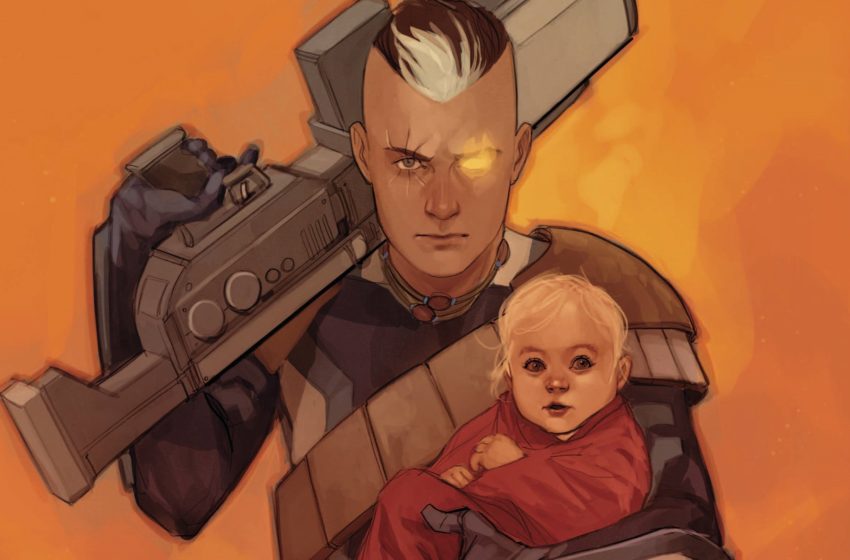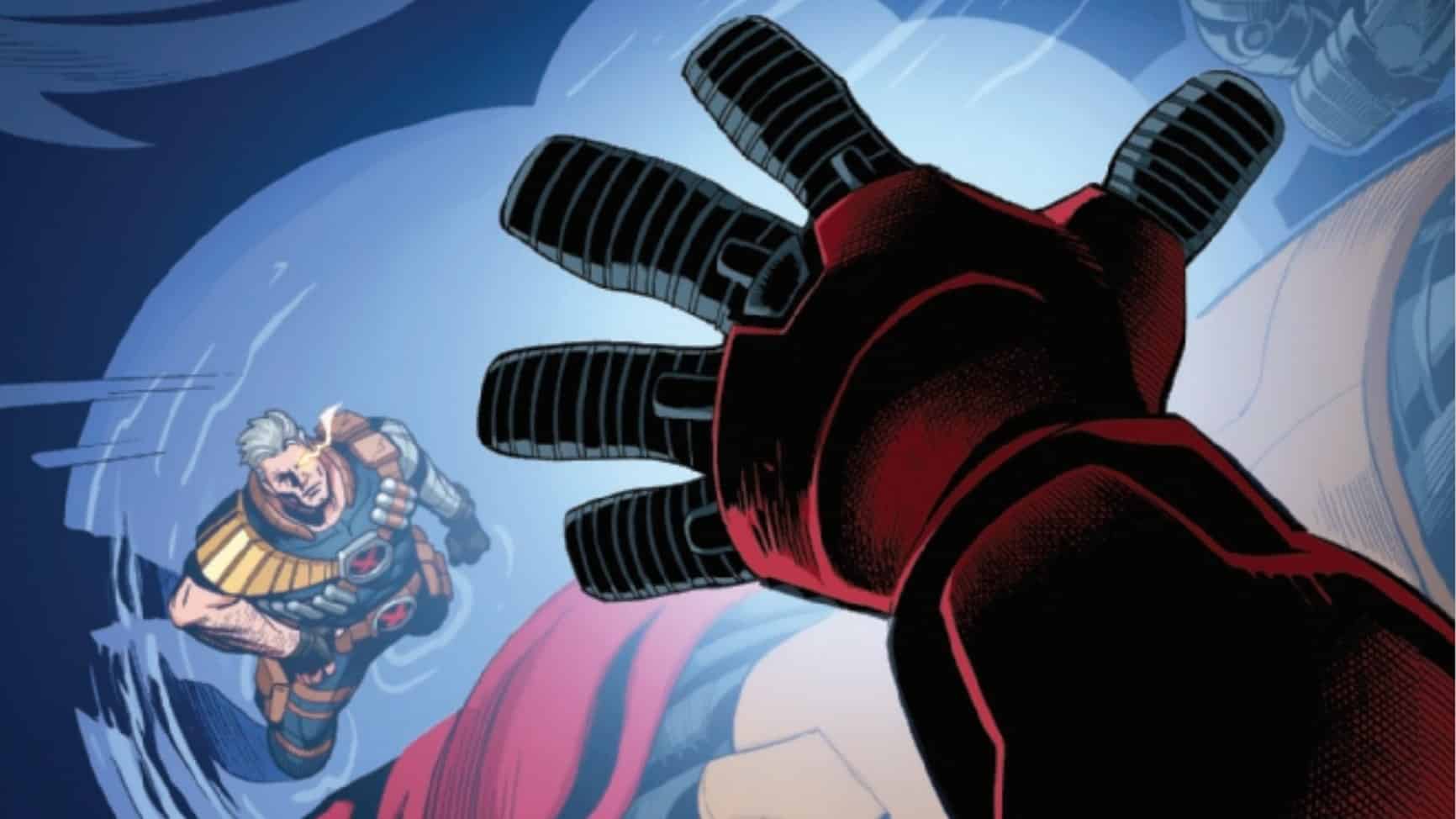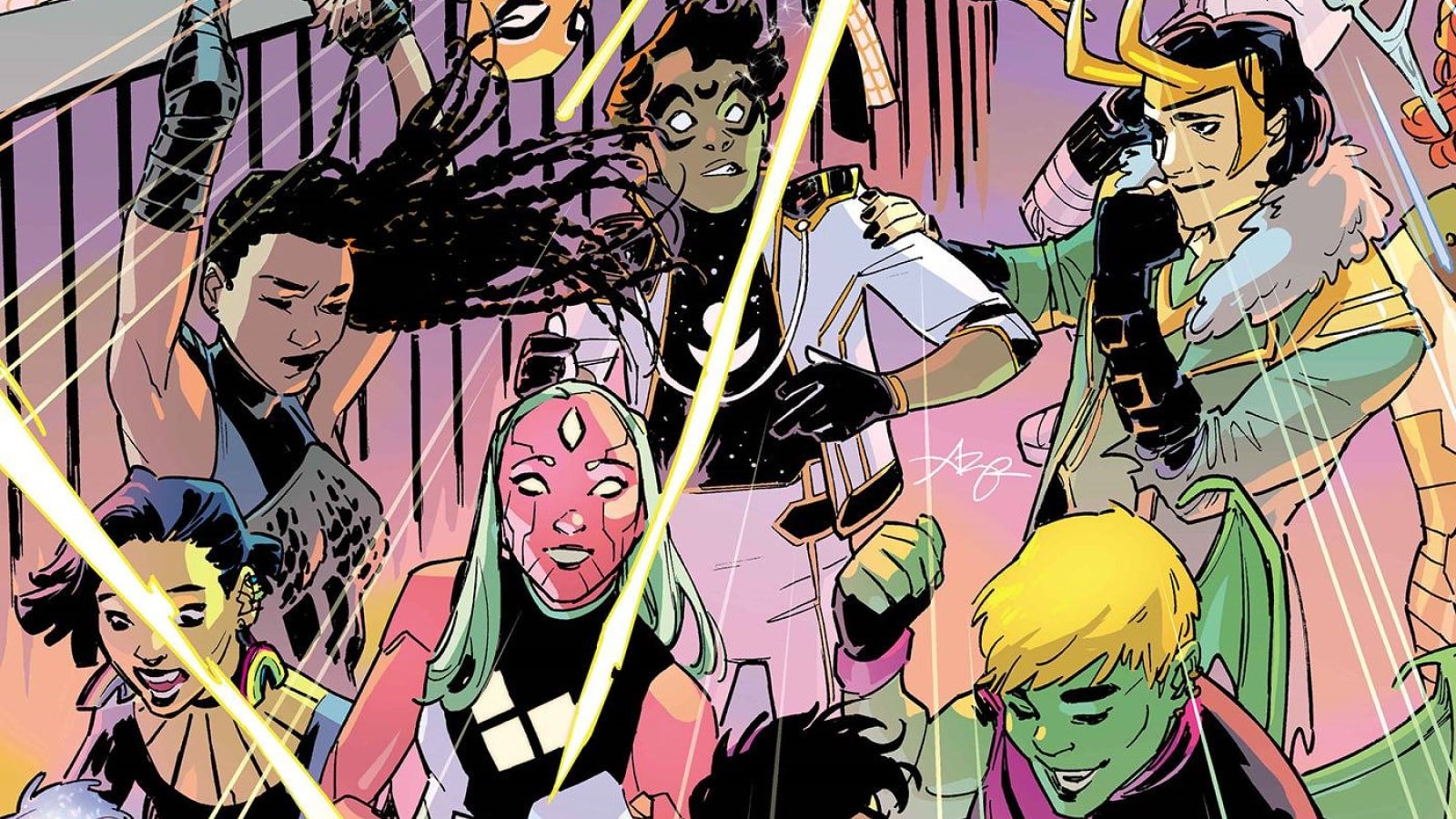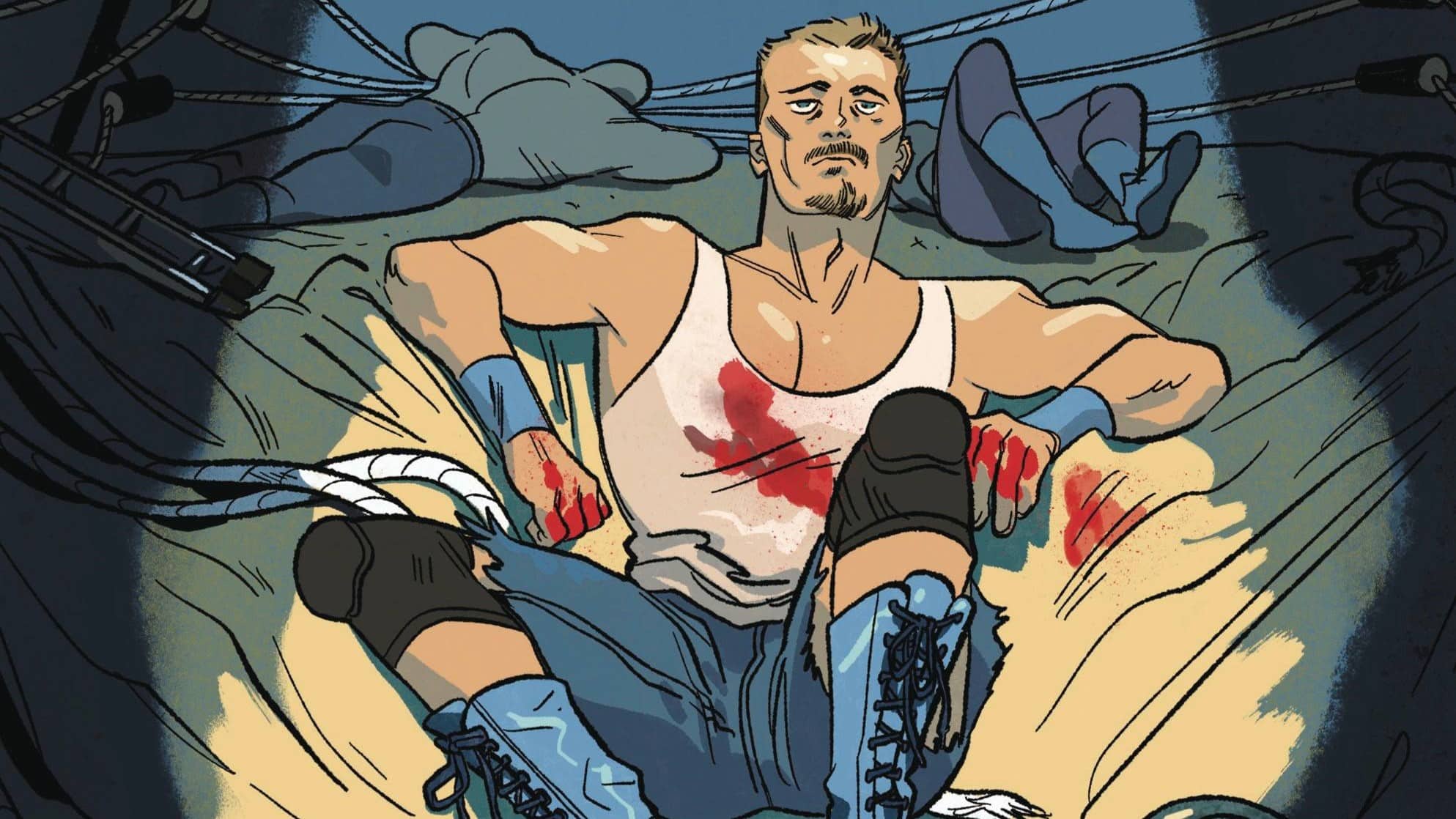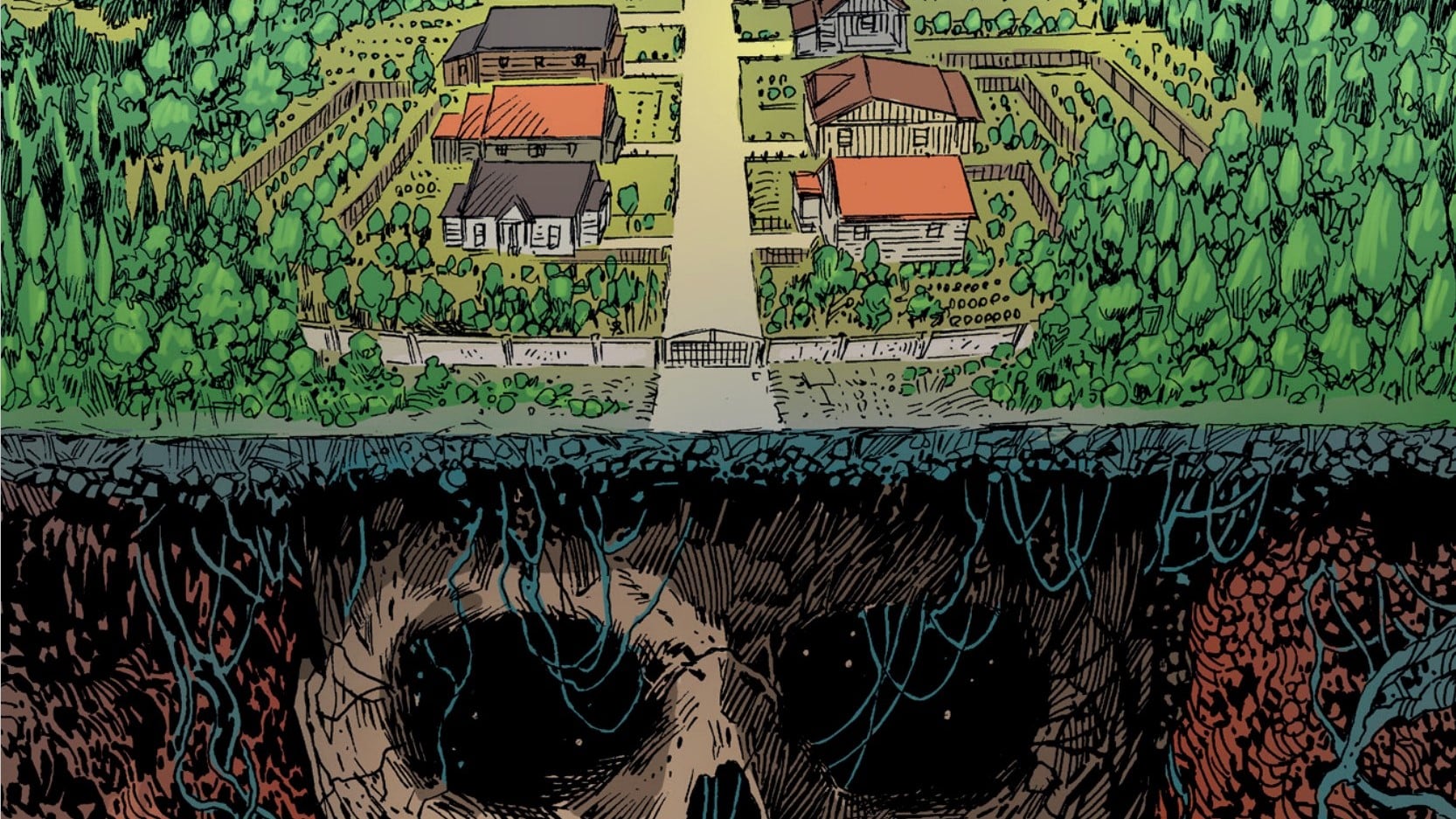Mutant babies have gone missing. The Summers family takes that personally. Gerry Duggan, Phil Noto and Joe Sabino deliver Cable #7.
Ritesh Babu: And we’re back, Ian! This is the first proper Post-XoS issue of the book!
Ian Gregory: If it feels like it’s been a long time, that’s because it has! Issue 6 of Cable came out in mid-November, and with the holiday slowdown, it’s been two full months since then. I loved X of Swords, but I’m ready to jump back into the main book’s story. I’m happy to see that Cable’s character moments in the crossover haven’t been forgotten, either.
Also, I’ll be honest, I have not kept up with King in Black at all and it sounds like something’s happening with Cable over there. Good for him, or, I’m sorry for him. It definitely doesn’t play into this issue. [Ed. note: He’s a Venom now, don’t worry about it. He’ll be fine.]
Family Matters

RB: Right out the gate, we basically get a ‘Cable teams up with his sister!’ story here, which is quite fun, and a nice way to sort of unwind from all the events in XoS. What happened there clearly impacts and drives Cable’s actions and choices forward, but the issue never is too reliant on delineating or expositing on those events, which I dug. You can just pick up the issue, and you get the sense that what happened mattered, but you’re not bogged down in it. The book doesn’t pause to go ‘Okay so here’s what happened in that event’.
It just jogs along, back to its sort of ‘Slice Of Life Mystery’ angle and niche, as sort of the YA book of the line once more.
IG: This is definitely a different emotional tone compared to the last issue of Cable. We’re back to some good funny bits and heartwarming family stuff with just an undercurrent of Cable’s self-doubt and despair. Despite the fact that Rachel is a very important part of Cable’s backstory, and while she technically appeared in Ed Brisson’s X-Force before this Krakoan era, this feels more like the first time we’ve seen these characters interact at length. Rachel is in full X-Factor detective mode here, a role that suits her well, and Cable is still doing that charming thing where he thinks he’s in charge.
Cable clearly trusts Rachel, but he doesn’t want to let her in. He’s become so preoccupied with his failures that he thinks he needs to achieve great things to make up for them, and that means shutting out his family. He eventually goes to get help from someone outside his family – maybe because he’s too afraid of disappointing Rachel, or his father, and it’s easier for him to connect with someone outside that sphere. Putting Cable in a family situation like this is pretty new for the character; he raised Hope, but didn’t exactly have a wide support network during that time.
RB: Having almost little to no experience with Rachel, I enjoyed this dynamic they ran with for her and Cable. She’s just the hyper-competent sister who’s kind of got it all together, relatively speaking, and just wants to help. [Ed. note: That ‘relatively speaking’ is doing a lot of heavy lifting here]
And yeah, I think there is an honesty to the angle here, wherein the poor kid has so much on his back, which was true even before the events of XoS, and he hasn’t actually been raised and taught how to deal with that. The familial unit set-up is, as you point out, Ian, new for him.
Sure, Kid Cable can do impossible time-tricks and slash with space swords. But he doesn’t know how to ask for help or reach out (without it feeling new and unusual), or know when to do so. It’s not something he’s used to or experienced with. He’s still learning that, and navigating his scenario, and that’s arguably the bigger thing here.
IG: Scott and Jean are clearly trying to hold on to whatever version of normalcy they have here, knowing that it probably won’t last. This is the second time Scott’s come by Cable’s room for some dad-talk, which is a great mode for him, even if he’s not exactly the best at it. Noto’s got a knack for expressions which gives these familial scenes lots of depth (especially Domino at the end, or Scott working on a bottle of wine). Speaking of, Noto’s work on the house combat scene is especially good, from the cool psychic spying, to the clean and creative fight sequence, to Cable’s half-page gunshot spread and the babies staying in frame and just floating there. It’s a nice fight that doesn’t get lost in the action but stays close to the characters.
In regards to the family, though: Jean is probably the person in this family who had the most normal upbringing, and, uh, that didn’t end great anyway. The Summers Family is essentially a found family of people who are all still related to each other, and none of them know what to do or how to act. And I guarantee you the last thing Kid Cable wants to do is talk to Hope, whose father he killed, even if she seems to have mellowed out a bit lately. [Ed. note: Not only did he kill her father, he is her father. Cable is wild.]
Stryfe Strikes Back

RB: So, I have next to no real experience at all with Stryfe, beyond the osmosis knowledge/understanding I have of him. My impression, on the whole, is that he is of The Dark Mirror variety, which I enjoy and have fun with, and has a SICK costume, which also helps a great deal. I enjoy his theatricality and flair. That big cape, that gigantic helm, I enjoy the excess of it all. He’s a bit dramatic, is he not? I quite like him.
IG: Stryfe has a bit more than a flair for the dramatic. Once, he kidnapped Scott and Jean and asked them to kill a baby in order to defeat his Dark Riders, as a sort of object lesson for how he believed they abandoned him as a baby. All that, and he still manages to win the award for “Least Huggable X-Men Character.” As far as iconic Cable villains go, he’s probably the biggest, alongside Apocalypse, who is otherwise occupied.
Stryfe’s continuity is somehow even more messed up than Cable’s. He’s died and been resurrected and time traveled and possessed people more times than I can count, so it’s generally just a good policy to assume that he’s always Alive and Out There (he was definitely in Brisson’s X-Force just a few years ago, which I think is his most recent appearance). [Ed. note: That was also teen Stryfe]
Unfortunately, Stryfe is basically a one-note character, motivated by his hatred of Cable and belief that Cable stole his life from him (again, uh, Cable didn’t exactly have much of a life either). He’s definitely iconic, and his appearance was more a matter of inevitability than anything else, but he doesn’t really lend himself to compelling stories.
RB: That’s interesting. The sense I very much get from the character is that while he’s not a fountain of nuance or the most compelling characterization in the way certain antagonists are, he’s a more symbolic presence. A vehicle to propel things forward in a certain direction. He’s more valuable for what he represents than what he is. And I say all that because to me, that’s essentially his purpose here.
What’s A Boy To Do

RB: So much of this Cable run has been about Kid Cable dealing with the tangled mess of identity. It’s entirely about who he thinks he should be, who he actually is, and what he deep down wants to be, even if he doesn’t always realize it himself. And we’ve had Old Man Cable to represent one facet of that, both the history and the future. The set of expectations and assumptions on one end. Now, we’re encountering the inevitable other end of that. The other half, the flip side of that coin.
If the Old Man is the hardened angelic voice in his inner ear, whispering him into action, Stryfe then symbolizes the devil on the other end. The work is, largely, about the internal reality of Kid Cable, refracted out wide. And so in a story of identity struggle, the future and growing up, the symbolic figure in Stryfe feels like an obvious (in a good way!) choice that fits.
IG: If Stryfe was jealous of Old Man Cable, who killed his own wife and had his son get mind controlled etc. etc., then he’s sure to be jealous of Kid Cable, who is Cable but actually has his parents and siblings and a safe and happy place to live. A fight with Stryfe is a good contrast point between Old Cable and Kid Cable, who is already more open, trusting, and social than Old Cable ever was (“This is my problem,” Kid Cable says, but he immediately goes to get help instead of trying to solve it himself). I only hope that Duggan finds a way to innovate on Stryfe, who by all rights should be a much more interesting character than he actually is. He is a clone, for one thing, which has new connotations on Krakoa, and we also can’t forget that Old Cable is off tracking down demons who kidnapped someone, which may end up wrapping around to be relevant to this story.
We’ve already seen Stryfe as a comparison point for Cable plenty of times. I hope that this time around, Duggan draws on Cable’s supporting cast and their relationship with Stryfe (which does seem to be happening here with the inclusion of Domino). I don’t need to know if Kid Cable is strong enough to take down Stryfe, I want to see how he does it differently than before, and how that affects Stryfe.
RB: Yeah, that makes sense. I do look forward to the inevitable confrontational moment wherein Kid Cable stands with a whole cavalcade of his allies, whilst Stryfe stands on the end, largely alone. Because that’s the other thing too- I don’t think this is a Cable that ever wants to be alone, even if he’s so eternally used to that. He has a true home. A place to belong. A community. He has love. He has a life, beyond all that he does. He gets to engage with and explore who he is, beyond what he does, which is important.
I’m curious as to how Stryfe responds to all that, watching a boy have the youth he only dreams he could’ve had.
X-Traneous Thoughts

- Duggan is really getting a lot of mileage out of these bewildered Philly Cops. Their digs at Cable are great, as is the image of them casually holding a bundle of mutant babies.
- Sage very responsibly pulling the alarm on “Cable is googling Stryfe”
- Colors in this issue were really interesting – some scenes were lit with a soft light that give them lots of texture, and some scenes had really defined colors that give the book a more animated, cartoony look. Neat trick getting the pink “psi-vision” scenes to look good, too.
- Noto’s introductory display of Rachel’s telepathic powers on page, with the lay-outs, was just striking. Really good visual storytelling there.
- Shout out to Sabino, whose lettering we love.
- Krakoan reads: GET LUCKY

